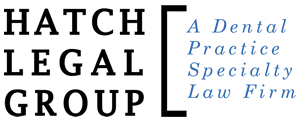Tax Issues for the Dental Practice
Now that tax season is drawing close, dentists are once again trying to figure out the best way to file their tax returns for the maximum possible benefits both for paying no more than necessary in the short term in filling out this year’s returns, or methods to use going forward for long term planning for tax savings. Meeting state and federal legal requirements is a complex task for a dental practice, and accountants or attorneys are often consulted. Some taxation issues are unique to dental practices, while others affect all small businesses.
Dentists should be aware that since many of the features of the design of their offices must meet the requirements of the Americans with Disabilities Act for access by physically disabled individuals, a tax credit under that Act may be available. It is important to note that the credit can only be taken advantage of if the primary purpose of the equipment or access features is specifically to help those with disabilities, and not just an office improvement benefitting all patients either with or without a disability. If a dental chair has some features which allow handicapped access, but is not primarily designed for those with disabilities, then the credit may not apply to the purchase of the chair. Sometimes the IRS has allowed a pro rata portion of the chair purchase to become available for a credit, if the dentist can prove that a high number of patients are disabled.
The choice of entity by the dental practice has some tax implications, particularly if the practice is considering incorporating. Corporations are subject to double taxation, once for the corporate income, and a second time for the individual’s profit from that income. LLPs, LLCs, S-Corporations or sole proprietorships generally have single flow through taxable income to the owners, and are more of a mechanism to avoid liability than taxes.
Tax qualified retirement plans set up under ERISA guidelines can allow an owner-dentist valuable tax savings when contributions are made on an ongoing basis and more than 20% of the monies go to plans set up for employees also. Up to a $500 tax credit for employers is available for 50% of the costs setting up the plans.
Additional tax advantages for dentists can be realized in setting up 401(k) plans that have a variety of different features that are beneficial for both the owners and employees. Profit sharing or 401(k) plans can allow employers to deduct up to 25% of compensation or $49,000 per employee (whichever is less).
Payroll taxes are a significant part of the responsibilities of a dental practice when looking at tax issues. Not withholding taxes from paychecks properly can result in severe penalties of up to 100% of back payroll taxes. Taxes are withheld to pay income taxes, social security (FICA) taxes and Medicare taxes. Money from these amounts which are withheld must be deposited in specified financial institutions. Federal Unemployment Taxes are also withheld and payments must be reported annually on a separate Form 940 tax return.
State taxes are also an important part of the tax responsibilities for dental practices. There are state income tax withholding requirements, as well as unemployment insurance taxes and workers’ compensation insurance payments.
Often the dental practice is faced with a very important tax consideration at the outset of using workers to perform duties within the practice. The question of whether to declare a worker an employee or an independent contractor is a complex question which often requires legal help, and there are new court cases developing in this area all the time. Independent contractors are much cheaper to maintain, given the extra burden of payroll tax requirements and payments for those workers classified as employees. But it is difficult to allow outside help to be labeled an independent contractor if there is any amount of direction and control over their work by the owner. And particular requirements for dental practices in this area are important when using part-time dentists or part-time hygienists.
